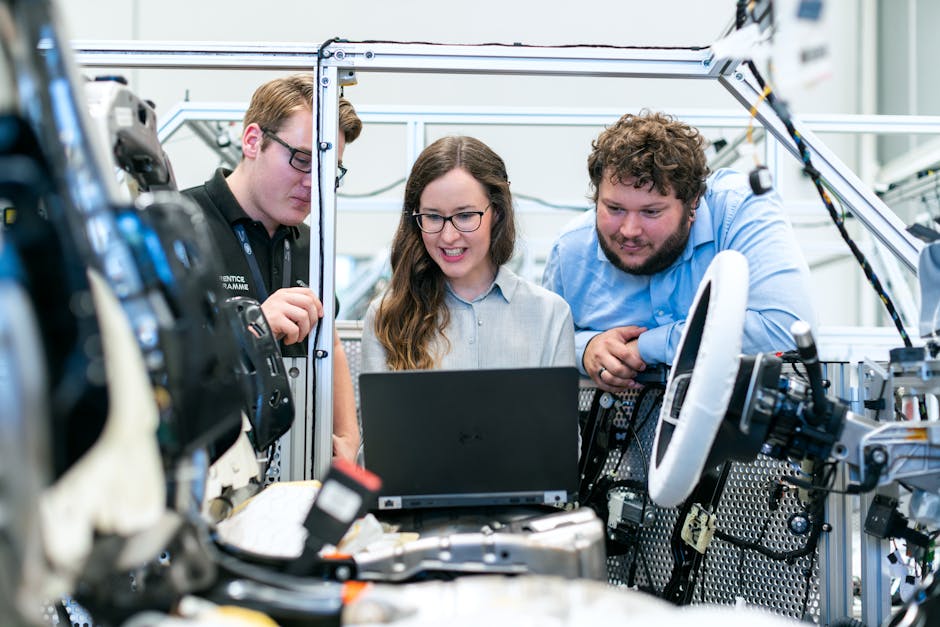AI-Powered Workflow Automation: Increase Efficiency and Productivity
Imagine you’re running a marathon, but instead of focusing on your stride, you’re constantly stopping to tie your shoelaces or check the map. That’s what managing a workflow without automation can feel like, lots of effort but not nearly enough progress. Now, picture handing off those distractions to a skilled assistant who takes care of them for you, so you can focus entirely on reaching the finish line.

This is the promise of AI-powered workflow automation: not just doing things faster, but doing them smarter.
What Is AI-Powered Workflow Automation?
At its simplest, AI-powered workflow automation involves using artificial intelligence tools to handle repetitive and time-consuming tasks within a business or personal workflow. Think of it as an intelligent helper that doesn’t just follow instructions but learns, adapts, and improves over time. Whether it’s sorting emails, generating reports, or streamlining customer service requests, these systems take the load off humans, enabling us to focus on more strategic or creative activities.
The technology leverages machine learning algorithms to understand patterns and make decisions without constant human input. AI can prioritize urgent tasks based on historical data or even predict bottlenecks before they occur. This isn’t just about working faster, it’s about working better.
The Benefits of Letting AI Take the Wheel
Let’s break this down into tangible advantages:
- Time Savings: Imagine automating something as mundane yet time-draining as scheduling meetings. Tools like Calendar.com use AI to identify available slots across team members’ calendars and book appointments automatically. A task that could take 15 minutes now takes seconds.
- Error Reduction: Humans make mistakes, especially when juggling multiple tasks. AI, with its ability to process vast amounts of data without fatigue, ensures accuracy in everything from data entry to financial calculations.
- Cost Efficiency: While initial setup may seem pricey, automated workflows can significantly reduce operational costs over time by eliminating redundancies and improving productivity.
- Improved Employee Satisfaction: No one enjoys spending hours on repetitive tasks like invoicing or report generation. Automation frees employees to engage in work that’s challenging and fulfilling.
Real-World Applications You’re Probably Already Using
You might not realize it, but some of your everyday tools are already powered by AI workflow automation. Ever noticed how your email app filters spam with uncanny accuracy? That’s machine learning in action. Or how customer support chatbots can resolve basic inquiries at lightning speed? Again, AI.
Consider larger-scale examples in industries like logistics. Companies such as Amazon rely heavily on AI to optimize delivery routes and inventory management. Closer to home, small businesses use platforms like HubSpot to automate marketing campaigns, ensuring emails are sent at optimal times and social media posts align with audience behavior patterns.
The Challenges: Not All Smooth Sailing
No technology is perfect, and AI-powered automation has its limitations too. For starters, setting up an efficient system requires upfront investment, not just financially but in terms of time and effort. Teams need to identify which processes should be automated and then train systems accordingly.
Another concern is over-reliance on technology. While AI excels at repetitive tasks, it can falter when faced with nuanced decision-making that requires human judgment or empathy. Imagine relying on an algorithm to address a sensitive customer complaint, it could easily miss the mark if context isn’t properly understood.
Data security also looms large. The more tasks we hand off to machines, the more data we generate and store digitally, increasing vulnerability to breaches. It’s critical for organizations to invest in robust cybersecurity measures alongside their automation efforts.
Getting Started: Practical Steps for Implementation
If you’re intrigued by the idea of integrating AI into your workflows but aren’t sure where to begin, here’s a simple roadmap:
- Identify Pain Points: Look at your daily operations and highlight tasks that are repetitive or prone to error. These are prime candidates for automation.
- Research Tools: Explore platforms designed for your needs, whether it’s project management tools like Asana, customer support solutions such as Zendesk, or even AI-driven finance apps.
- Pilot Small: Begin with a single process rather than attempting an organization-wide rollout. Automate appointment scheduling before tackling inventory management.
- Monitor Performance: Track metrics like time saved or error rates reduced to gauge the impact of your new system.
- Iterate: Use insights gained from monitoring to refine and expand your automation strategy over time.
A New Way Forward for Workflows
The adoption of AI-powered workflow automation isn’t just a trend; it’s quickly becoming an integral part of how businesses operate efficiently in fast-paced environments. Whether you’re looking to save time on mundane tasks or seeking ways to scale operations without scaling costs, these tools offer solutions that are both practical and transformative.
When implemented thoughtfully, automation doesn’t replace human effort; it enhances it. And isn’t that what innovation should be all about?
